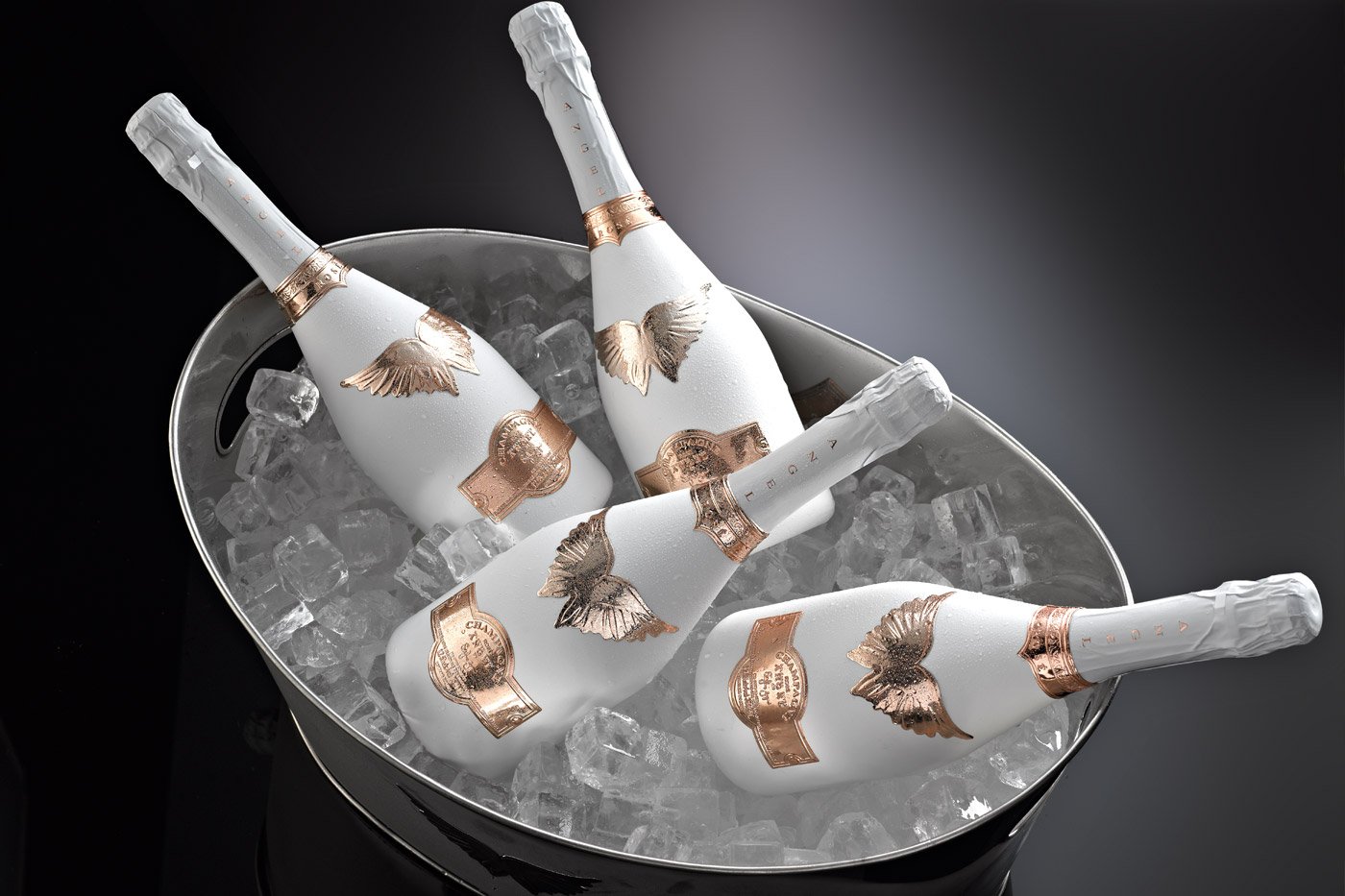ANGEL CHAMPAGNE
THE PURSUIT OF EXCELLENCE
GRAPES
Angel owes its unique taste and bouquet to the assemblage of three grape varieties: Chardonnay, Pinot Noir and Pinot Meunier. The Chardonnay, a white grape, brings to our champagne its soft, fruity flavour and great refreshing acidity. Pinot Noir, one of the world’s most exquisite red grapes, adds boldness and depth to the opulent taste of Angel. Pinot Meunier, also a red grape, is vital in the production of our champagne. Angel’s distinctive notes owe much to the fruitiness and freshness this grape adds to the power of Pinot Noir and the grape of Chardonnay.


HARVESTING AND PRESSING
In champagne, under the rules of appellation, harvesting grapes must be carried out by hand. Before pressing, our grapes are also hand sorted with a particular attention to detail. The process is timely but the quality of the yield is assured and unsurpassed. Angel uses state of the art pneumatic presses, not traditional baskets, ensuring the highest level of quality.
BLENDING
Angel is a much admired, selected cuvée containing only the most exquisite and richest pressings from Premier Cru harvested grapes. With the aid of our highly acclaimed oenologists, each year the wine of the vintage is skilfully blended with some of the sacred reserve wines from years gone by. This ensures greater levels of consistency which enables the finish, after assemblage, to become more delicate and complex in its nature.


AGEING
After perfecting the blend, the wine is bottled, sealed and stored approximately 100 feet underground. Specifically, designed cellars dug deep beneath the chalky substrate create the perfect conditions for protecting our delicate cuvées. Complex and time consuming methods adopted over hundreds of years by true artisans and time served craftsmen owe much to our celebrated wines. Our non-vintage brut ages on average 30 months, whilst our rosé takes 36 months and our vintage cuvées age over 7-8 years.
REMUAGE
When the ageing ends the process of Remuage, or riddling, begins. It’s the process of turning the bottles each day one quarter turn so the sediment from the second fermentation migrates down into the neck of the bottle. Some champagnes now undergo mechanical riddling. Angel Champagne however prides itself on using the time-honoured methods of hand turning in its pursuit for perfection.


DÉGORGEMENT
Is a term attributed to the method in which the sediment collected in the neck of the bottle is removed with minimum loss of wine after Remuage is complete. The process involves freezing the neck of the bottle and removing the resulting plug of ice that contains the sediment.
DOSAGE
Following Remuage and Dégorgement each bottle is given the addition of liqueur-de-dosage, a mixture of wine and fine sugar cane. Each champagne’s liqueur-de-dosage is a sacred recipe and closely guarded secret often passed down from generation to generation. Our unique aged liqueur-de-dosage is precisely what gives Angel Champagne its superb taste and in fact, it’s very soul.


FINISHING
Finally, Angel’s skilled artisans apply the finishing touches, with each precious bottle delicately hand-finished. A special black matt paint gently cloaks our Non-Vintage Brut Champagne and a warm tactile white matt, coats each bottle of our Rosé. Finally, a more traditional dark green glass encases and encapsulates our most precious Vintage Champagne’s.
When the bottles are ready, Angel’s dedicated craftsmen apply a four-piece label set. Each set includes our unique motif, embossed in highly polished pewter for both our Non-Vintage Brut and Rosé cuvées and Black Pewter for our Vintages.
There can never be any mistaking the undeniably distinctive aesthetic of each and every bottle of Angel Champagne.

